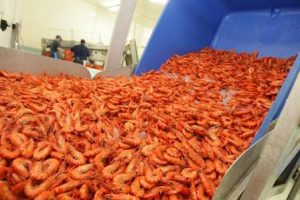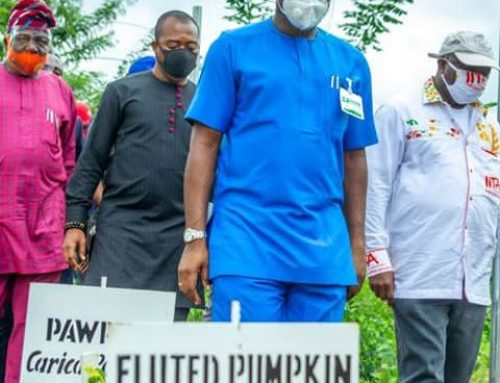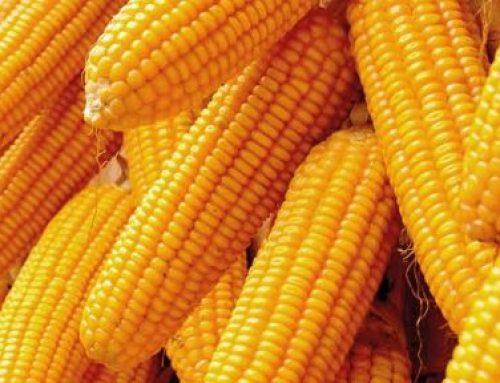Prawns are crustaceans with exoskeleton. The term “prawn” is used particularly in the United Kingdom, Ireland, and Commonwealth nations, for large swimming crustaceans.
Prawns have claws on three of their five pairs of legs, shrimp have claws on two of their five pairs of legs. Their gills and body shape are different too. As far as cooking them goes, they are virtually identical and interchangeable.
A freshwater prawn farm is an aquaculture business designed to raise and produce freshwater prawns or shrimps for human consumption. It is capital intensive and requires lots of attention. China is leading in prawn/shrimp production, followed by India and Thailand. Other major producer countries include Taiwan, Vietnam and Bangladesh. There are only a few species of shrimp that are farmed globally. One of the most popular species is the Macrobrachium rosenbergii, the Giant Malaysian Prawn, which is a freshwater prawn, native of South Asia.
Raising and producing freshwater shrimp or prawns in your own aquaculture fish farm is highly profitable business because the market for them is global. 
Freshwater shrimp farming is suitable mostly in the warmer climate, and is similar to marine shrimp farming in many ways because they share many of the same characteristics and problems. The freshwater shrimp farming processes include growing out your juvenile shrimps into adults.
FARMING METHODS
Traditional /extensive method
Thisis is the simplest Shrimp aquaculture approach where Shrimps are farmed with minimum intervention. The farm is situated in coastal or mangrove areas and the seed stock for production is acquired from the wild, as a result the supply is season dependent. The average stocking density is usually low (between 3000-5000fry per hectare) and a yield between 500-800kg/ha/year. The ponds are often irregular in shape and size and fall between 3-20 hectares. In this method, the use of pump is not employed and water exchange is left to tidal action.
Semi-intensive method
In this farming method, the improvement over the traditional approach is in the introduction of a systematic pond configuration. The ponds are generally rectangular in shape with typical sizes of about about 1–3 hectares and water depth of 0.80 to 1.2 meters. Each pond has separate inlet and outlet gates to facilitate water exchange, pond preparation and harvesting. A diagonal ditch, 5–10 meters wide and 30–50 cm deep extending from inlet to outlet is also constructed to facilitate drainage of water and collection of Shrimp during harvest. The ditch also serves as a refuge for the Shrimps during sunny days. This method involves higher stocking rates, use of supplementary feeds and the implementation of a regular water management scheme. Current practices vary from country to country. The typical rate of stocking fry for semi-intensive culture operation varies from 20,000 to 50,000 fry per hectare. Supplementary feed is given daily in addition to the existing natural food produced through the application of fertilizers. This operation also requires the use of a water pump to facilitate water exchange.
Intensive Shrimp Farming
This is the most financially rewarding method of Shrimp farming as it promises more yield and more return on investment.
The aim of the intensive Shrimp farming is to hasten the Shrimp growth cycle, to produce Shrimps of uniform size and also to increase yield per hectare. In this farming system, conditions must be controlled to achieve the aforementioned goals.
A farming technology called Galveston or “clear water” hatchery employs intensive control to breed shrimp in industrial scale. Large-scale hatcheries usually augment young shrimp diet of algae with commercial feed. They use big tanks that could hold up to 30 tons.
As conditions are highly controlled, it is possible to produce seed stock all year round and to stock shrimp at higher densities. As it is possible to stock more shrimp per unit area, the pond used could be smaller. In this setup, aeration is needed to keep oxygen supply at the desired level to avoid a situation where shrimps die from lack of oxygen. High water exchange is also necessary in getting rid of wastes materials from the water. Lastly, there is a need for round-the clock monitoring. Survival rates and yield are higher for this kind of farming. Understandably, production cost is also higher.
GUIDE TO STARTING YOUR OWN PRAWN/SHRIMP FARM
• SITE SELECTION
The location of a Shrimp farm is essential because location affect the survival, growth and yield of Shrimps/prawns been farmed.
Select a location to dig a pond specifically for raising freshwater shrimps or prawns. Get samples of your soil from six different places, mix them together and let it dry. Send your soil sample to your state’s Extension Soil Testing Laboratory for soil testing. Determine the pH level of your soil. If your soil is too acidic, having a pH level of less than 6.5, you might need to add lime stone to your pond.
The soil needs to be in excellent condition for retaining water.
Also make sure that there are no harmful chemicals present in the soil where you choose to dig your pond. Shrimp are sensitive to pesticides and chemical based fertilizers used for crops. Avoid locations that are subject to nearby runoff water or drift which might contain agricultural spray or pesticides.
Although most farmers would dig a pond similar to a pond used for raising channel catfish, you can also use large fish tanks and swimming pools. Water containers can also be used; however, a natural pond yields the best shrimp production for commercial farming.
• DIG A POND
Usually freshwater shrimp farmers don’t get good results with freshly dug ponds because there is not enough supply of food available in the ponds. Shrimp mostly feed on insect larva and algae, which do not grow the first year after digging a pond.
• WATER QUALITY
The water you choose for your pond has to be clean, preferably well water of acceptable quality. Runoff from streams, rivers, and reservoirs can also be used, but it is very important to evaluate the quality of your water source before selecting a suitable site.
Make sure that you do not choose an area for freshwater shrimp farming which is subject to periodic flooding, or your shrimp will get away.
A good flow of fresh water is necessary for the shrimp. It is also important to supply them with enough oxygen.
After filling your pond with water, add natural organic fertilizers to ensure plenty of natural food for your shrimp. Shrimp need plenty of natural organisms to feed on. Get rid of unwanted weed from your pond. A liquid fertilizer gives you the best results.
• Find a commercial hatchery to purchase your juvenile shrimp from or buy from local farmers.
Before you stock your juvenile shrimps or prawns, check the pond water for insects and larva that might eat the young shrimp/prawns. Use an organic method for removing these insects and larva. If you’ve used water other than well water, make sure that there aren’t any other kinds of fish in the water, especially bass, green sunfish, and bluegills. If there are fishes in the pond, get rid of them before stocking juvenile shrimps. These kinds of fishes are predators. Gradually replace the water in which your juvenile shrimp were transported with the water from the pond. Make sure that the temperature difference of the water is within 6 degrees Fahrenheit. The pond water should be close to 68 degrees. Young juveniles are more susceptible to the cold than the adult shrimp.
• DENSITY
Stock shrimp at the rate of 12,000 – 16,000 per acre. Lower stocking density will increase the size of your shrimp.
• FEEDING
Juvenile prawns stocked into grow-out ponds are able to find food themselves naturally from organisms growing in the pond. Start feeding when the shrimp exceed the size of 5.0 grams or greater. Commercial fish feed for channel cat fish is suitable for shrimps and feeding depends on the size.
As shrimps mature, supplementary feeding is required. Common supplement include dry pelleted feed, rice bran, chopped toad and frogs and household leftovers. Supplementary feed can be administered by the use of feeding trays, automatic machine feeder or by broadcasting the feed.
• HARVESTING
This is the last stage of Shrimp farming. In ideal situations, it is carried out in October – just as it begins to get cooler; thus, stopping the growth period of the shrimp. Mature shrimps can be culled from the pond prior to this time, leaving smaller ones to be harvested or all the shrimps can be harvested at the same time. The shrimps can either be harvested with the use of nets or they can be harvested by draining the pool. Harvesting is best done in the cool hours of the day, this is to prevent the sun from increasing the temperature and decreasing the volume of the water and the oxygen levels in the water which can kill the Shrimps and lose the business revenue.





Kindly come up with the business plan for interested entrepreneurs’ perusal